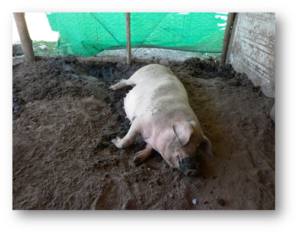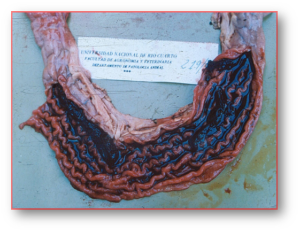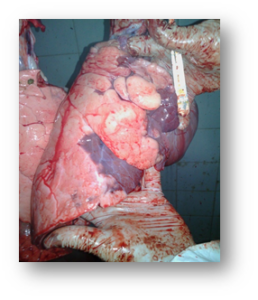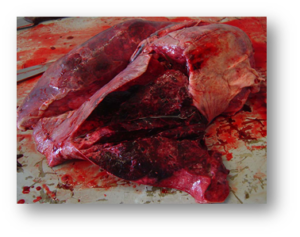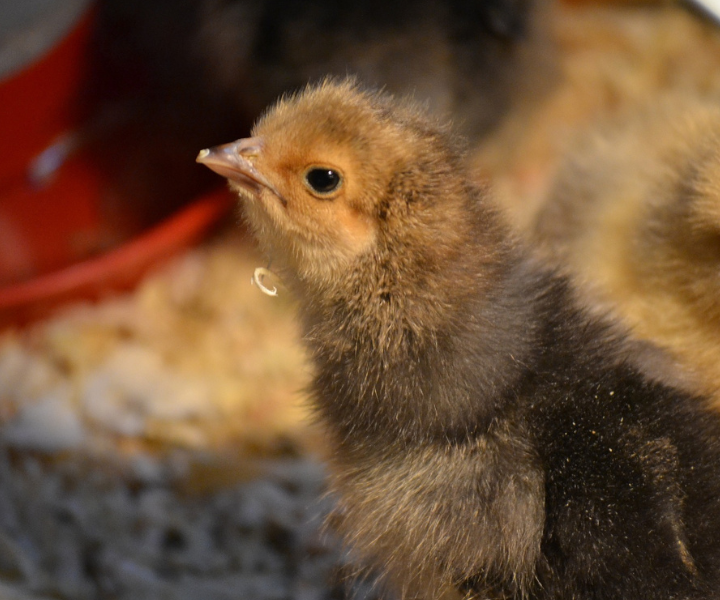
Symposium on “Additives in Animal Feed” in Mendoza
3 de August de 2017
Minervet attended a Foreign Trade Day event of the Chamber of Commerce of Cuyo
11 de August de 2017I. Introduction
As for today the production of pork in Argentina is in the third place after the bovine and bird.
In 2016 there was an average consumption of 12.3 kg / per person of pork; belonging 3 kg to the consumption of slaughtered, this value was the highest of the decade. This was due to the opening of new slaughter centers and slow price growth of beef.
During the year 2016 the estimated production achieved to 519 thousand tons with an average of 6 million slaughtered heads.
The largest concentration of pig farms are located in the north of the province of Buenos Aires, south of Santa Fe and center of Córdoba, but it is also possible to find small, less-technological productions throughout the country.
According to information issued by Confederaciones Rurales Argentinas (CRA), 96% of pig farms have less than 50 sows in production with serious subsistence difficulties.
The small producers that are distributed in the rural zones present serious inconveniences for the control by the sanitary authorities of the country. The lack of investments for infrastructure, nutrition and health results in the persistent presence of pathologies are very important for public health.
There are certain pathologies that are within the official surveillance plan. We can mention among them the Classical Swine Fever (PPC) of which Argentina has the free declaration since 2005 and the Swine Reproductive Respiratory Syndrome (PRRS) exotic disease that does not present records of admission to our country and therefore it is intended to keep the free status.
Another disease of pigs that is under epidemiological surveillance is Aujeszky’s Disease (EA) that according to serological surveys is present and active in some areas of the country. The critical area for Aujeszky is located to the north of the Argentina including provinces like Chaco, Formosa, Salta or Santiago del Estero.
For the practical purposes, we can divide the pathologies depending on the category that is usually affected; thus, the piglets will suffer mainly digestive processes such as diarrhea, the fattening segment has a greater predisposition to respiratory pathologies and the reproductive group can suffer reproductive pathologies, cystitis or sudden death, among others.
We should not forget to mention important pathologies for public health due to their zoonotic potential such as brucellosis and trichinosis.
Pregnant pig in precarious installation-Property of M.V.Víctor Shqueitzer, Provincial Direction of Livestock, Mendoza, Argentina
Photo: Evangelina Zarate
II. Digestive pathologies
Digestive pathologies present with diarrhea as the main clinical sign of a complex is formed by different etiological agents, of which we can name:
– Coronavirus, causing gastroenteritis with high infective potential in piglets, resulting mortality and delayed growth.
– Intestinal hemorrhagic syndrome, the cause unknown, producing sudden death in piglets with good body condition.
– Lawsonia intracellularis (porcine proliferative enteropathy), bacterial disease that affects young animals causing chronic diarrhea and adults with hemorrhagic diarrhea.
– Brachispira pilosicoli (porcine colonic spirochetosis) pathology producing diarrhea, delayed growth, but with low mortality.
– Yersinia spp (enterocolitica and pseudotuberculosis), first cause inflammation of the small and large intestine with diarrhea, and as second produces abscesses.
– Salmonella (typhimurium and cholerarsuis), the second is associated with diarrhea in piglets and source of poisoning man.
– Cryptosporidium (suis and parvum), intracellular parasite that affects piglets causing diarrhea, dehydration and weight loss.
– Brachispira hydysenteriae (swine dysentery), with high morbidity due to profuse diarrhea with traces of bloody fibrin and intestinal tissue.
– Parasitosis, other important parasites such as coccidia, nematodes, cestodes among others.
In addition to the pathologies mentioned above, the loss of piglets due to the poor management and poor infrastructure of many pig farms established in marginal urban areas should also be highlighted.
Hemorrhagic Intestinal Injury-Property of Universidad Nacional de Río Cuarto, Córdoba, Argentina
Photo: Evangelina Zarate
III. Respiratory pathologies: respiratory complex
The diseases that shape the respiratory complex can be grouped as example:
–Atrophic -Rinitis (Bordetella bronchiseptica, Pasteurella multocida), the first colonizes early, between 15 to 20 days old, cutting bone development. The second colonizes after 20 days and destroys the formed cartilage. As a consequence, affected animals will show growth delay, reduced weight gain, sneezing, tearing and predisposition to other respiratory diseases.
–Neumonía swine enzootic (Mycoplasma hyopneumonidae) endemic in most farms produce chronic respiratory disease with symptoms of nonproductive cough, impact on daily gain and feed conversion, high morbidity and low mortality.
–Pleuroneumonia (Actinobacillus pleuropneumoniae), two embodiments, one of hyperacute / acute type with fever, depression, respiratory distress, presence of bloody mucus and death. A chronic presentation showing animals with growth delay, poor body condition, respiratory distress to physical exercise and low mortality.
–Pasteurelosis (Pasteurella multocida), opportunistic causative of respiratory disease associated with primary infections with other pathogens, presenting subacute or acute disease. They are characterized by producing nasal production, emancipation, hyperthermia, pneumonia, hyperventilation due to respiratory distress and high mortality.
– Actinobacillus suis is another opportunistic pathogen that affects pigs and increasingly fattening animals. Its symptoms are usually very varied including pneumonia, pleuritis, cyanosis, metritis, meningitis, hemorrhages, fever, anorexia and death. This disease must be differentiated from Actinobacillus pleuropneumoniae (APP), as it tends to show similar injuries.
–Circovirosis (porcine circovirus PCV2) being another cause of systemic diseases. In addition causing respiratory frames with dyspnea, it is possible to observe anemia, diarrhea, growth delay, cyanosis, enlargement of lymph nodes, strong immunosuppressive effect and death.
–Fumonisinas (Fusarium moniliforme, Fusarium proliferatus) very strong mycotoxins causing interstitial pulmonary edema and sudden death. It is found mainly in the corn kernel that has been affected by humidity and temperature conditions.
–EA or Pseudorabies (Porcine herpesvirus type 1) disease that primarily affects pigs, but can be distributed to other species including cattle, horses, dogs and cats with nervous frames followed by death.
In pigs the symptomatology is wide affecting all systems with variable manifestations: cough, sneezing, pneumonia, reproductive failures, abortions, mummification, weak piglets nervous symptoms, variable mortality depending on the affected group.
Areas of Pulmonary Tissue Consolidation and Damage – MV Property Victor Shqueitzer, Provincial Directorate of Livestock, Mendoza, Argentina
Photo: Evangelina Zarate
IV. Reproductive Pathologies
The adults can be affected by pathologies that directly impact the reproductive system causing significant losses in the sector.
Aujeszky’s disease, causes abortions, mummified or born weak, due to the migration of the virus to uterine tissue and affect pregnancy.
Swine Parvovirus (Swine Parvovirus PVP), frequently causes an infectious infertility in sows with a mummified fetuses, embryonic loss and stillbirth. There is no other type of symptomatology.
Swine -Leptospirosis (Leptospira spp) once introduced into the farm pigs become carriers with location agent and intermittent kidney excretion through urine.
During an acute outbreak in sows can produce depression, loose of appetence, fever, last trimester abortion, born dead, mummified, born weak and repetition of heat. The categories of piglets and fattening may also be affected.
Swine -Brucelosis (Brucella suis) diseas of high importance because of its zoonotic potential. It has attraction for the placenta and is established there generating inflammation and abortion. In males it is established in testicles and accessory glands causing orchitis, epididymitis and infertility. It is transferred by secretions like semen and uterine discharges, increasing the risk of contagion to the human.
V. Trichinosis
Another disease of major public health importance that remains latent is trichinosis (Trichinella spiralis) caused by a microscopic parasite that lives in the muscle tissue and is transmitted to humans through ingestion of raw or undercooked meat.
The highest incidence of the disease is related to the presence of breeding sites in marginal areas near landfills, where pigs are fed by corpses and there is a high presence of rodents. This situation is linked to conditions of subsistence of a critical socioeconomic class.
In spite of being obligatory the complaint before any organism to control the presence of positive animals to the parasite, the finding is only made known when there has been an outbreak in a group of people. The outbreaks occur mainly during the autumn and winter months.
The control agencies carry out daily rural extension work with the objective of reaching producers with fewer resources and achieving the awareness and implementation of improvements in infrastructure, food and health. Provide training with the objective of finding frequent pathologies, sanitary management appropriate to the type of production, improvements in facilities, biosafety and balanced nutrition. Follow-up is carried out in order to corroborate the implementation and the desire for improvement.
We thank Veterinarian Victor Shqueitzer and Veterinarian Marcelo Queirolo, representatives of the swine Production Office of the Provincial Department of Livestock of Mendoza for the information provided.
Veterinarians Marcelo Queirolo and Victor Shqueitzer- Provincial Direction of Livestock Mendoza-Argentina
Editorial: Zárate Evangelina, Veterinary Medicine MINERVET SA, for Veterinaria Digital and Minervet.com

